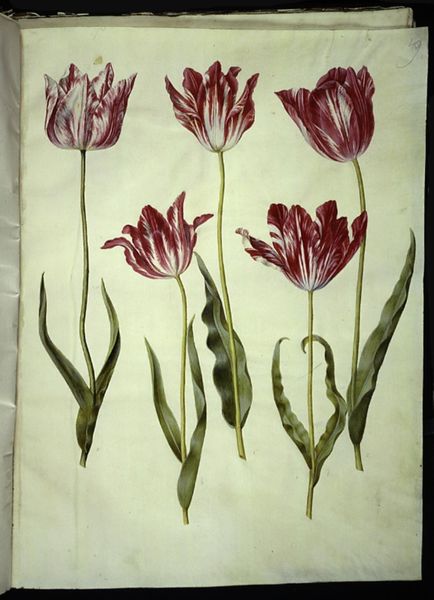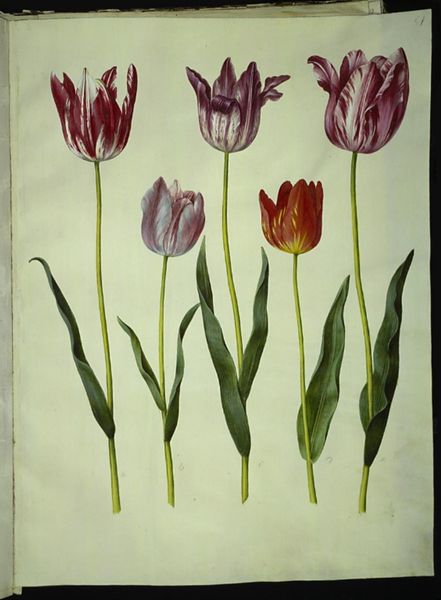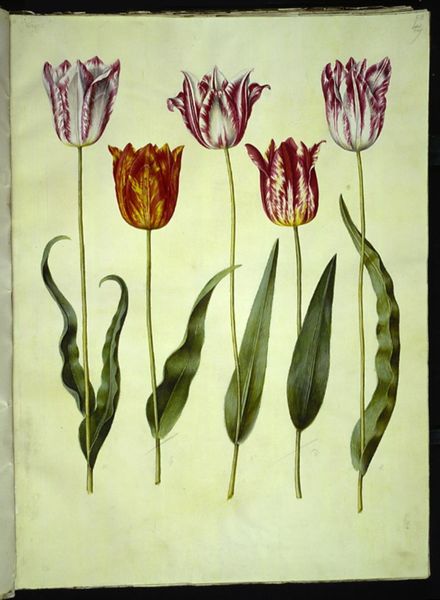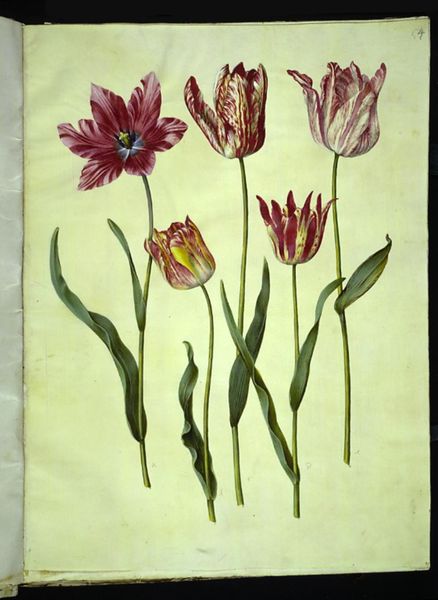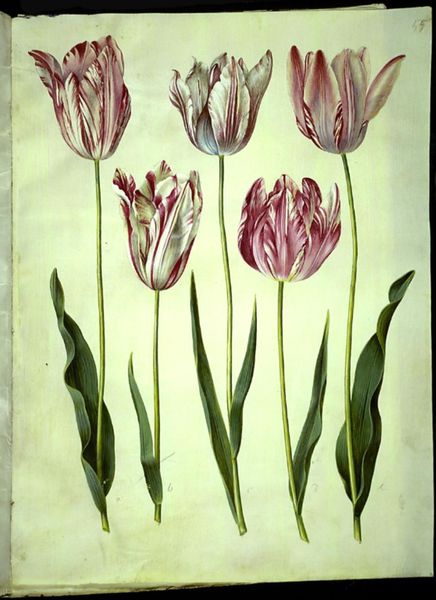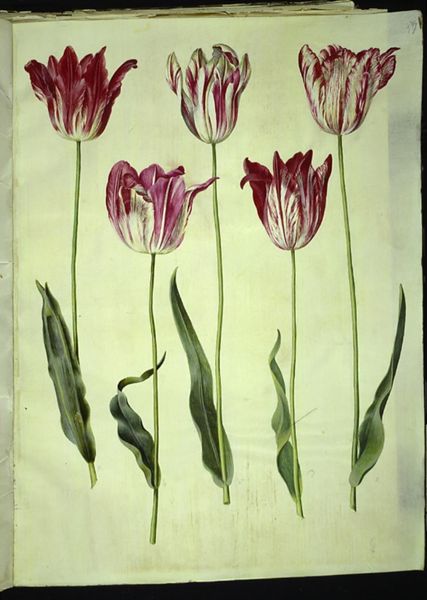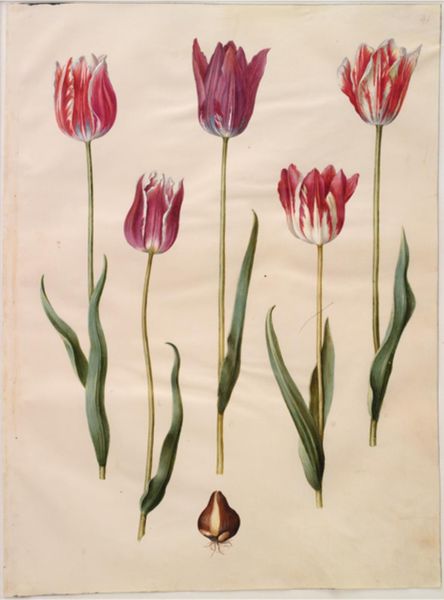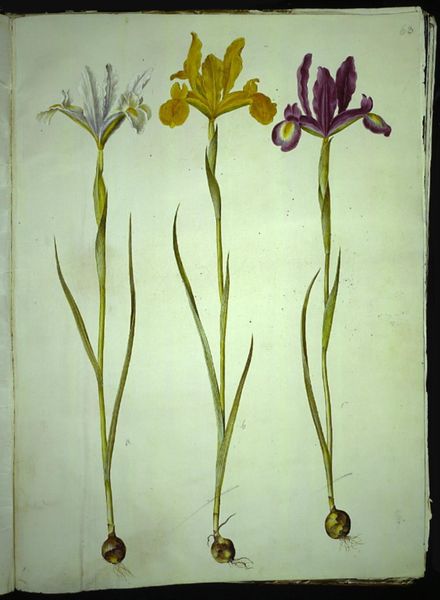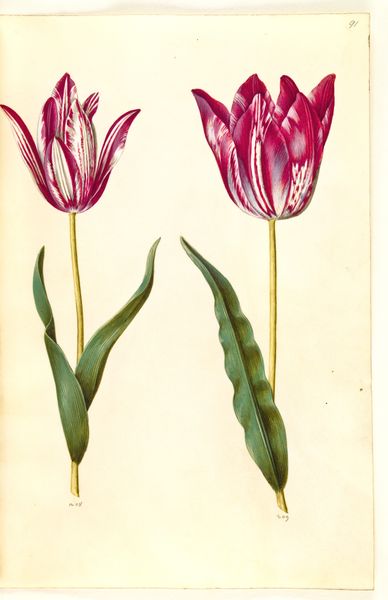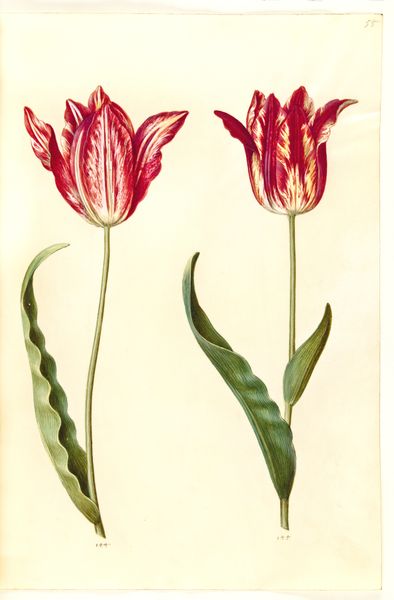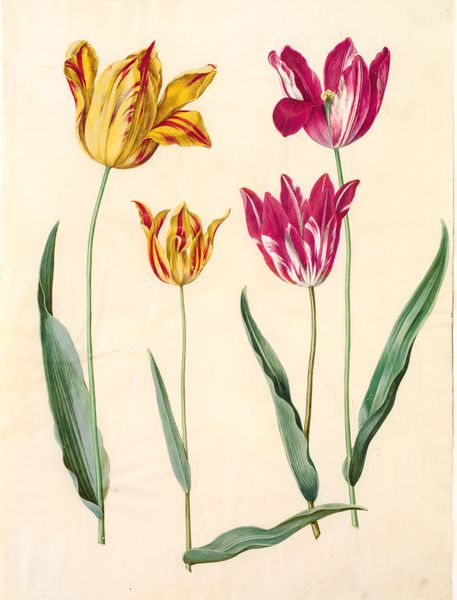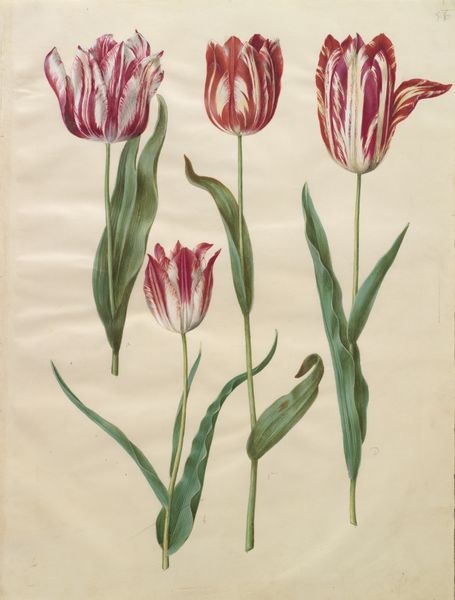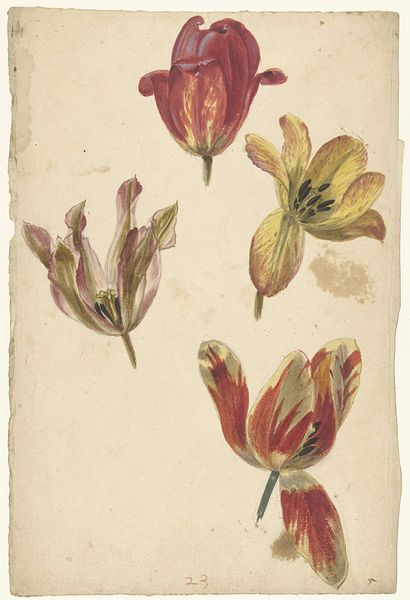
drawing, coloured-pencil, gouache, watercolor
#
portrait
#
drawing
#
coloured-pencil
#
baroque
#
dutch-golden-age
#
gouache
#
watercolor
#
coloured pencil
#
botanical art
#
watercolor
Dimensions: 505 mm (height) x 385 mm (width) (bladmaal)
Here we see Hans Simon Holtzbecker’s botanical illustration, "Tulipa gesneriana," a watercolour on paper, capturing the vibrant diversity of tulips. During the 17th century, the tulip, particularly in Holland, became more than just a flower. Its symbolic weight ballooned, embodying status, wealth, and even irrationality during the infamous Tulip Mania. The vividly striped petals, caused by a virus, ironically increased their allure and value. We can see a connection with the flower symbolism of the Renaissance in Botticelli's "Primavera," where the profusion of flowers suggests fertility and rebirth, hinting at the cyclical nature of life. Likewise, the single tulip can symbolize the fleeting nature of beauty and life. This echoes in later vanitas paintings where flowers signify the transience of earthly pleasures. Holtzbecker’s tulips offer a glimpse into how cultural phenomena can become deeply intertwined with our collective desires and anxieties. This image is not just a botanical study but a mirror reflecting the passions and follies of its time.
Comments
No comments
Be the first to comment and join the conversation on the ultimate creative platform.
